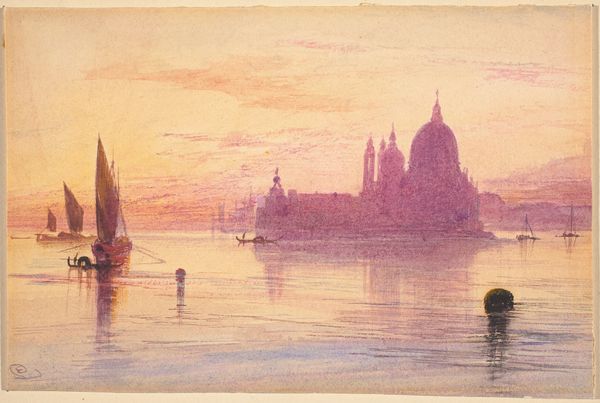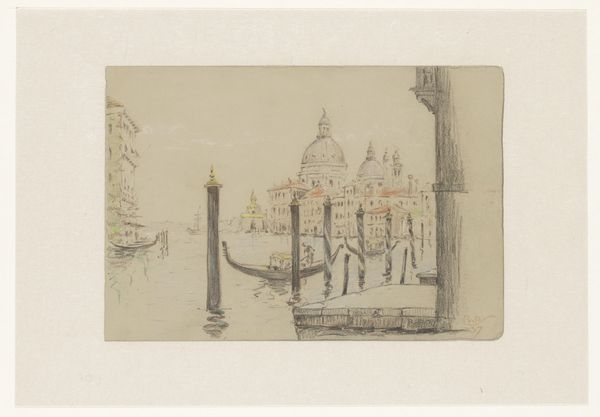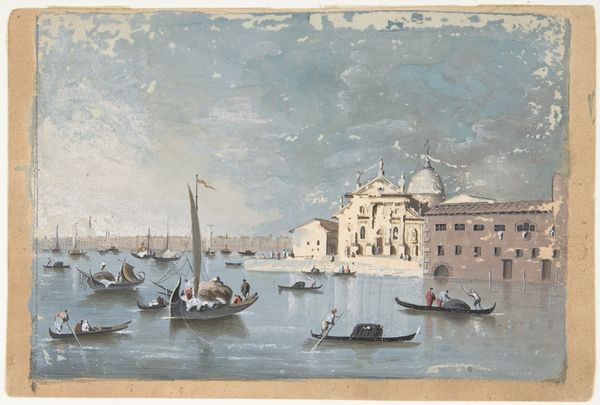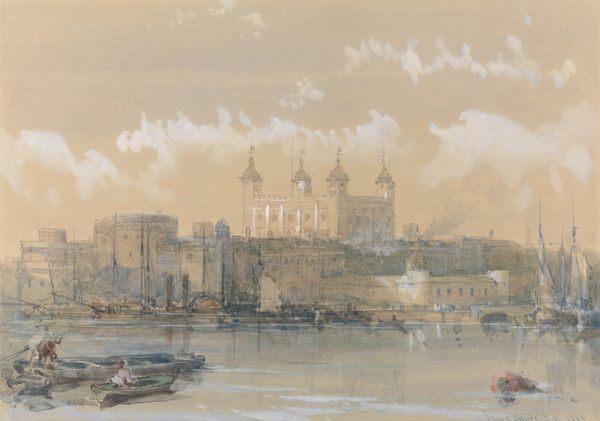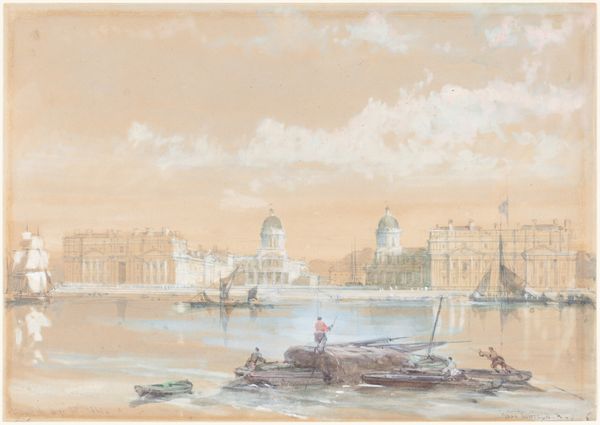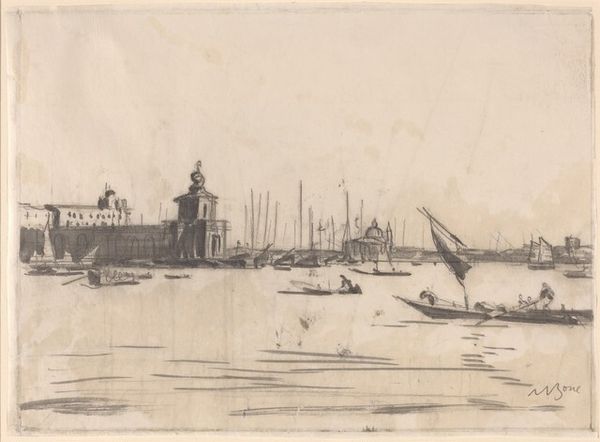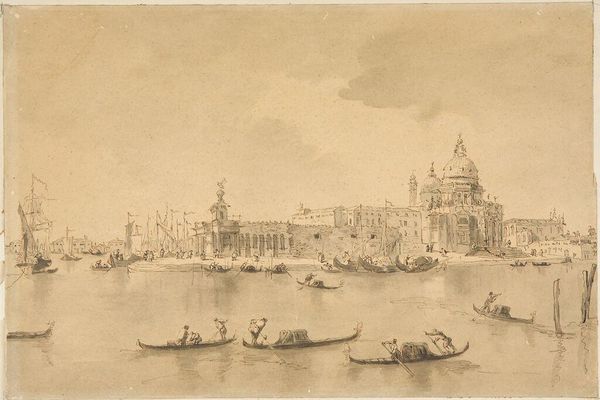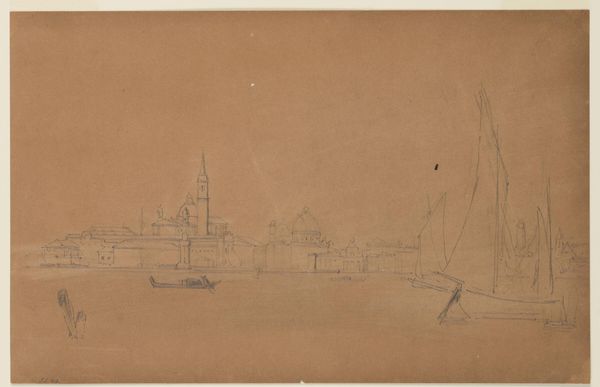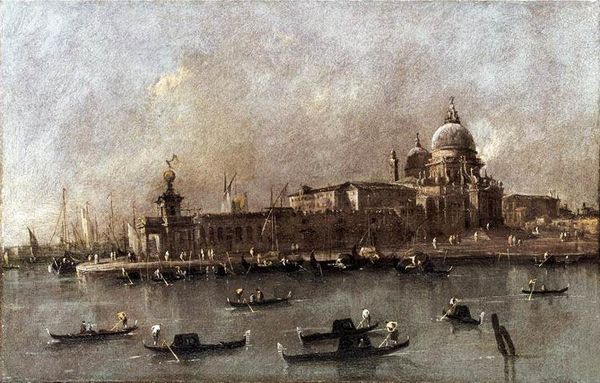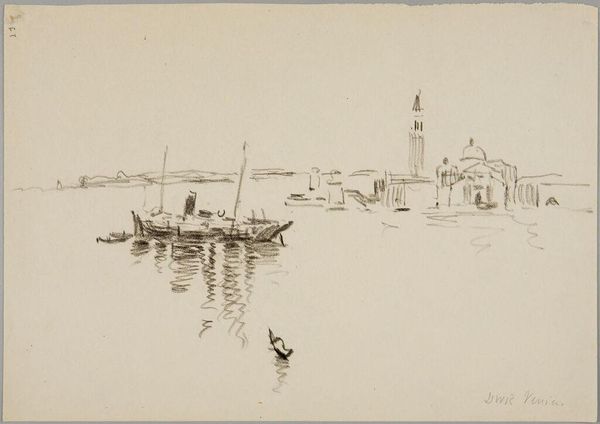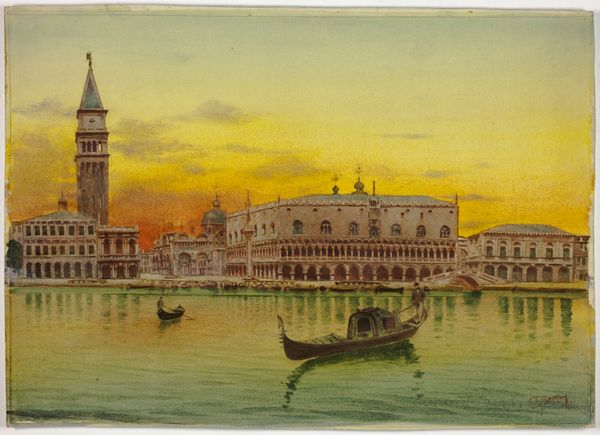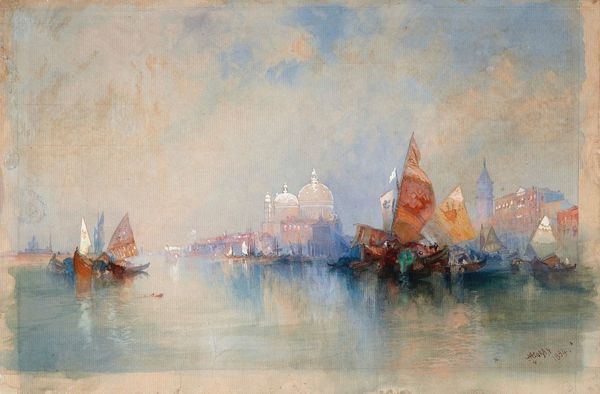
View across the Giudecca Canal toward the Salute and the Campanile of San Marco c. 1875
0:00
0:00
Dimensions: sheet: 36.6 × 53.1 cm (14 7/16 × 20 7/8 in.)
Copyright: National Gallery of Art: CC0 1.0
Editor: Here we have William Stanley Haseltine’s "View across the Giudecca Canal toward the Salute and the Campanile of San Marco," dating to around 1875, executed in watercolor and pencil. It feels quite subdued, almost hazy. What draws your eye when you look at this piece? Curator: What intrigues me is the clear focus on the *making* of the artwork. Haseltine employs watercolor and pencil—materials readily available, portable, suitable for en plein air. Consider the implications of these choices. He’s not just depicting Venice; he’s engaging with the labor of artistic production itself, transforming a landscape into a commodity, an artwork for consumption. How might the availability and cost of these materials at the time shape our understanding? Editor: So you're saying the medium isn't just a vehicle, it's part of the message? I guess the ‘sketch-like’ quality makes sense now too, reflecting a specific mode of artistic labour that wasn't about achieving hyperrealism. Curator: Precisely. The sketch becomes the artwork itself, blurring the boundaries between preparation and finished piece, craft and "high art". It compels us to consider who would buy such a scene, what its economic function was within a booming market for picturesque views of European cities. Think too, about the tradition of Venetian painting, the tourist trade – this artwork enters that network of production and exchange. Editor: I see. So it is also kind of challenging the grand, studio-produced landscapes? Curator: Yes, but carefully. It gives a more instantaneous view. Editor: That is so interesting. I hadn't considered the role of materials in this way before, but thinking about the materials as evidence of the labour really sheds new light on the subject. Thanks for helping me think differently! Curator: And understanding these commercial forces allows us to reassess impressionism's engagement with capitalism and industrial production in society during this time period.
Comments
No comments
Be the first to comment and join the conversation on the ultimate creative platform.
